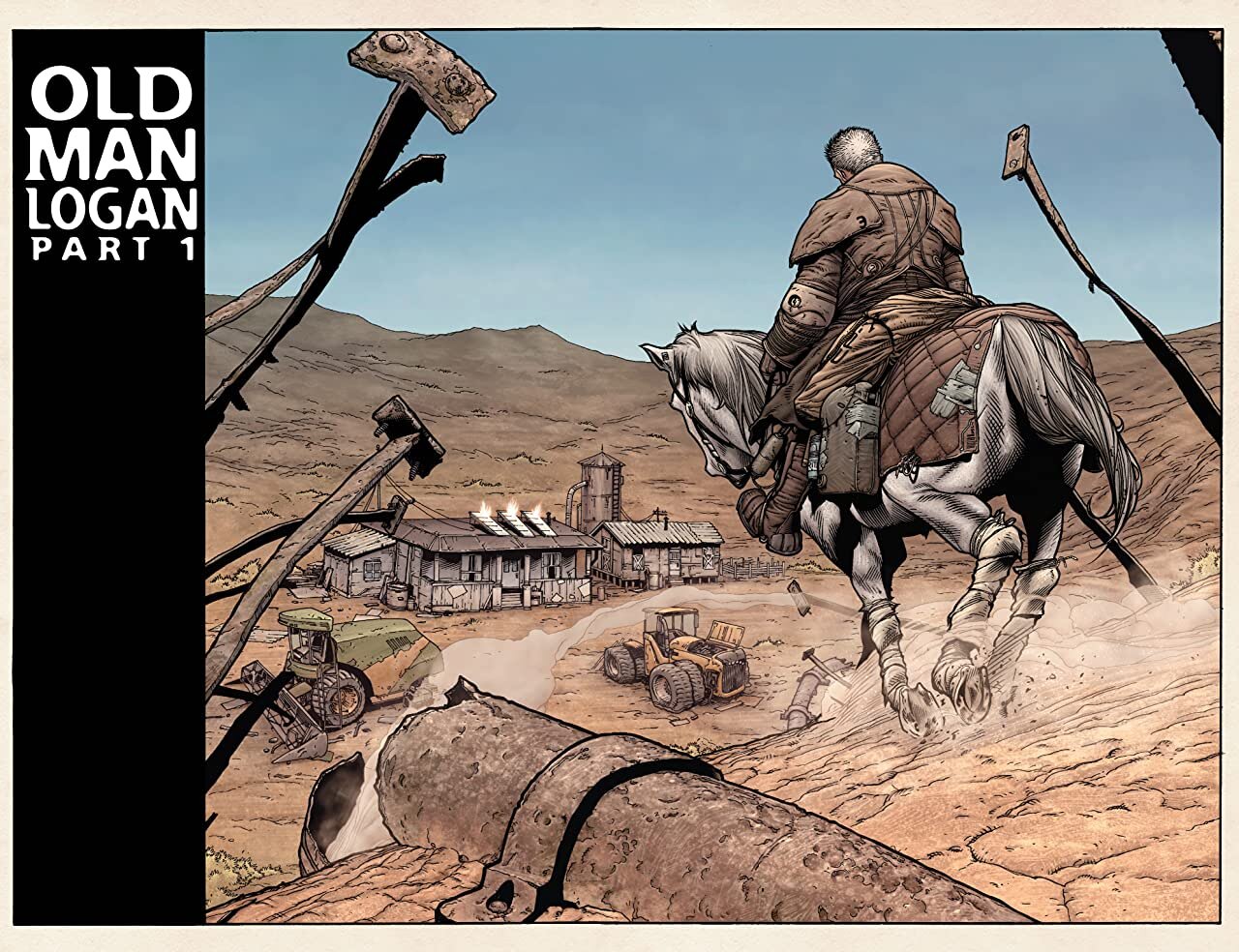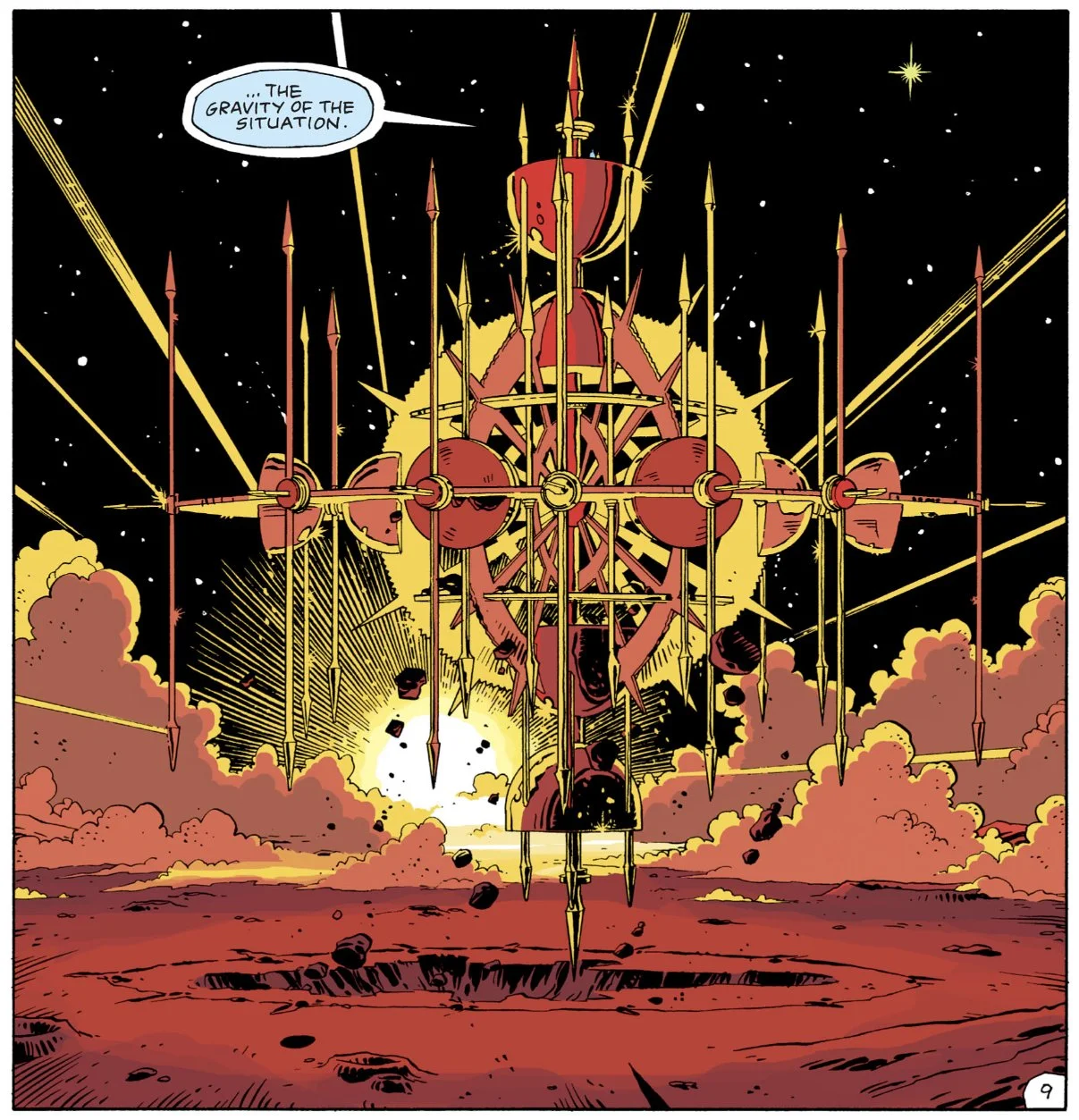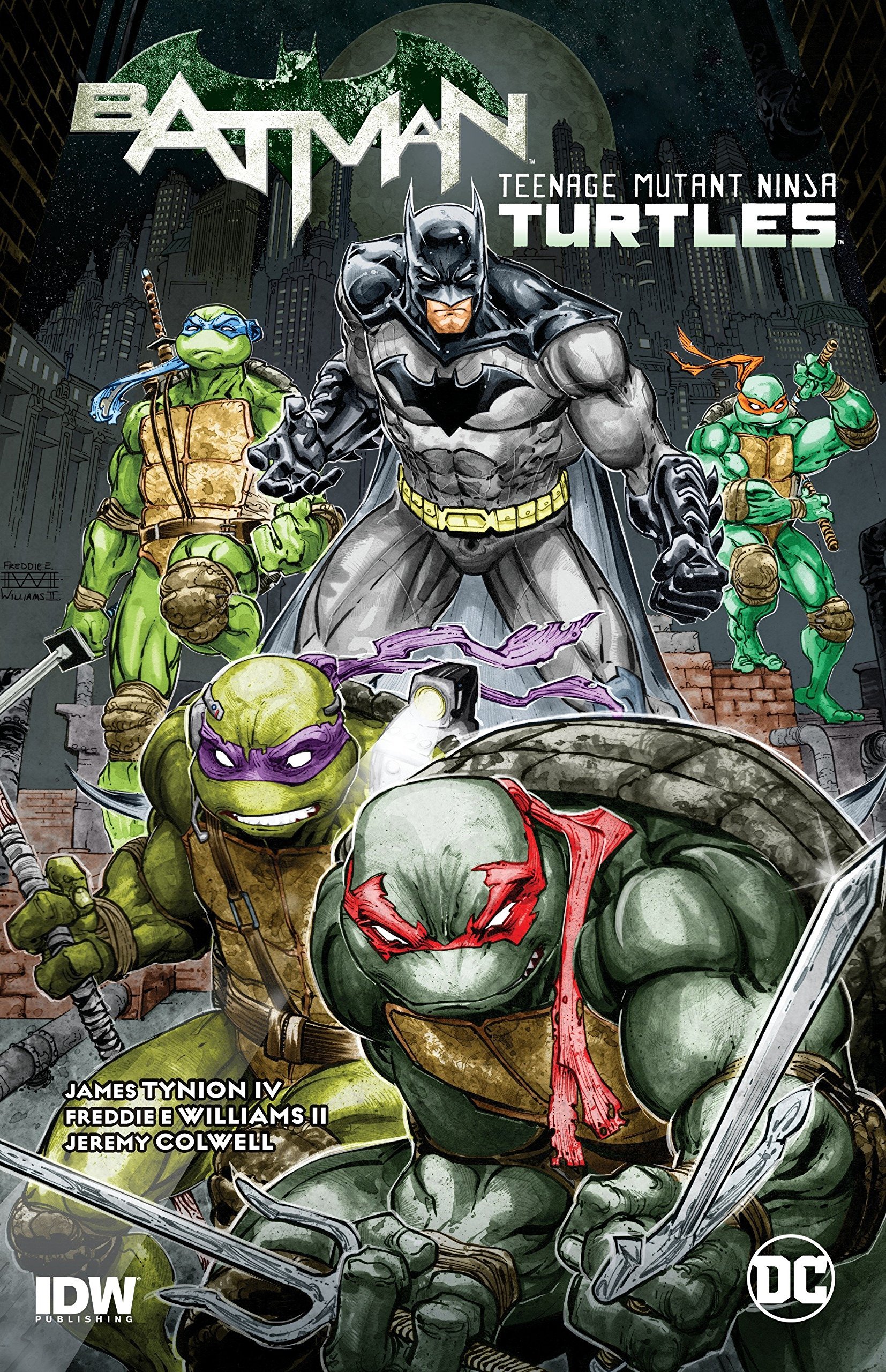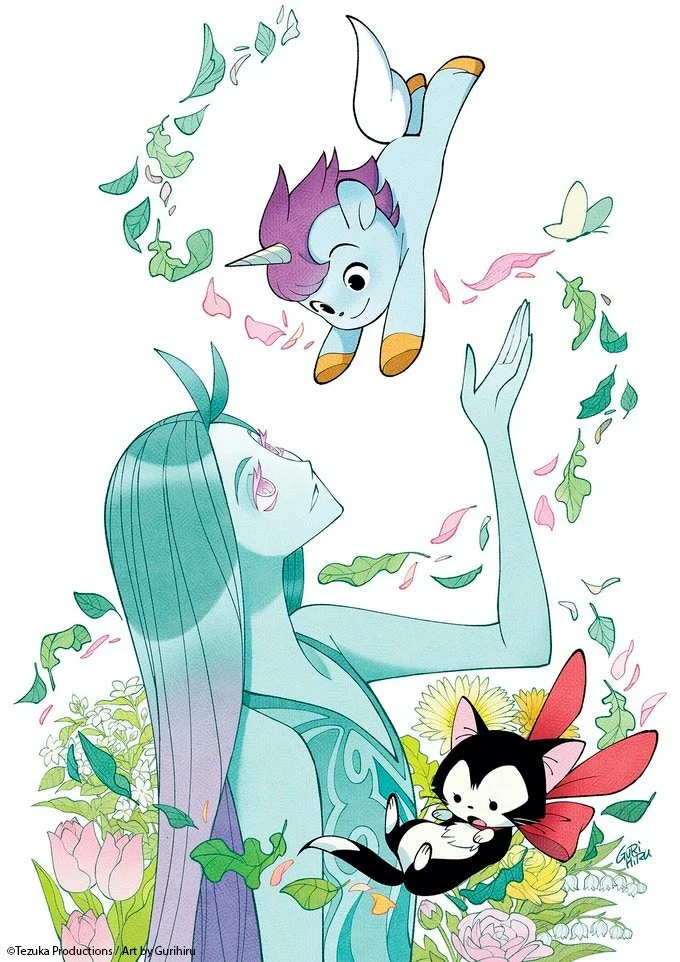Analysis: CROSSOVER #2 and the War of the References
By Jacob Cordas — If you were to ask Alan Moore, he’d tell you he ran into Constantine one day. This is years after he had written the character. He was just in London and there the character was - whole and real. Constantine came up to him and whispered a few words in his ears, “I’ll tell you the ultimate secret of magic. Any cunt could do it.”
If you were to ask Grant Morrison, they would tell you after a long conversation that winds between innumerable topics that you better be fucking high but not too high, “During the Descent or Collapse of the 32nd path, basically the end of the Universe as we understand it, Malkuth gets drawn up into Yesod and the two spheres merge, which results in the repair or restoration of the horizontal symmetry of the Tree. Qabalah uses the metaphor of spheres but think about the real world and how that collapse of the boundaries between reality and illusion has manifested in our lives since 9/11. The real world has been getting more like fiction while fiction has worked hard to become more realistic and plausible, as they attempt to meet in the middle. After 9/11 you had to explain the most ridiculous superheroes scientifically, like Iron Man or Batman. We witnessed the rise of reality TV, scripted documentary, fake news, cognitive dissonance.”**
If you were to ask Donny Cates, he would quite possibly flip through the sixteen different comic scripts, the three screenplays and the two teleplays he is working on. He would put on a metal album that is really cool but unobtrusive to the conversation at hand. And only then would he finally say, “I think I off-handedly said that seeing one of these events from the perspective of a normal person on the street would be really cool.”
Which is all a great introduction to a thorough analysis of the Cates-penned new release out this week, Crossover #2…
Part One: Died and Came Back and Died Again and Came Back Again
When everything is meta, nothing is meta. As the boundaries of reality and fiction crumble in everyday life, meta as a qualifier on a piece of art becomes meaningless. Every story now needs to exist as a reminder of its own fictitious nature. Characters hang lamp shades on the tropes, quipping through impossibility instead of embracing the impossible. Worlds are conventions that we can discuss through pop culture lenses - Spider-Man is no longer a stand-in for the everyman but rather is the everyman.
In a post-Community world, everyone jokes about the fact we are living in the darkest timeline. Reality couldn’t be worse so there must be a fictional other option that provides us safety and security. To help make the facts of children in cages, of millions without healthcare, of a sea level rising without any desire to stop it, of so many impossibly awful things, we need the warmth of the unspecified otherness.
Metafiction, in the modern sense, arose out of the ability for writers and critics to exist simultaneously. It "assimilates all perspectives of criticism into the fictional process." Even the earliest hints of this style of writing came directly out of this - whether it be Don Quixote: The Second Part or The Tragedy of Tragedies; or The Life and Death of Tom Thumb the Great. Metafiction serves to distill literature and criticism down into a monolith of “art.”
It embraced irony to a powerful effect at first. This distance created existential dread, grounded the world. It made the worlds more intimate while often more isolating. However as time went on that irony became dangerous and toxic. It allowed for laziness instead of evolution, or it evolved into laziness. To quote Samuel McClure Taylor, "At its worst, a culture of irony and self reference is not postmodern judo. It's fearful cynicism: pervert everything into a grotesque imitation of itself as way of playing out the safety of adolescence into adulthood."**
If we can have literature stand in comment of itself, you only need to know literature in place of the world. The irony and meta narratives shield the audience from discussions. You add in the extra element of capitalism, which forces the commodification of every successful creative venture, and you have stories as regurgitation.
Comics, of course, did not escape this. From the first shockingly successful superhero event comics — Crisis on Infinite Earths and Secret Wars — the Big Two discovered they could milk the ever living shit out of audiences through these “game changing events.”*** Every few years on an ever-increasing timeline, we got more events. More worlds were shattered. More characters died and came back and died again and came back again. More stories that were the most important to the universe, that “change[d] everything” became mandatory yearly products until eventually the big two gave in to years that are only events. This year alone I can count five Marvel events and four DC events, or if not events, or if not events, at least major crossovers.
It is no surprise we have had meta-takes on these events. They had to happen. We have to deconstruct them. We have to talk about them. It’s a necessity. It’s reached the point where the best issue so far in this year’s Dark Nights: Death Metal event is a tie-in centering around a villain discovering his own metatextual value within the canon, “You see…I’m going to live forever…I’m too good an idea.”****
So I suppose that’s why we are here talking about (flips through notecards of every meta work that came out this year about superheroes in the real world - truly too many to count) Crossover #2.
**My Life With The Shakespeare Cult by Samuel McClure Taylor
***Do I really need to cite a source for this mandatory line in every event marketing descriptor?
****Dark Nights Death Metal: Multiverse's End #1
Part Two: Addiction, Codependency and Fatherhood
Donny Cates writes about addiction, redemption and facing failure. He started his now superstar superhero comics career with Buzzkill. The protagonist in this story is a superhero and clear writer stand-in, who could only access his powers when intoxicated. The hero has chosen to detox only to discover he must get access to his powers once last time to fight his ultimate villain, his father. Donny Cates writes about himself.
Whether it be God Country* or Baby Teeth, Redneck** or Venom (my personal favorite of his long form works), Donny Cates has always been writing about himself, his community and his struggles. And I want to make this explicitly clear, there is nothing wrong with that. This methodology has created and will create amazing art, with Cates himself having added to this legacy.
To focus on my favorite, Venom is a story about addiction, codependency and fatherhood. Eddie Brock is taken from a basic brute and reformed into a man desperate to be as good as he thinks he can’t be. His toxic relationship with the symbiote mirroring that of addiction, having it go so far as to black out memories and convince him he was dying without it. The symbiote is the main reason Eddie doesn’t have a relationship with his son. People consistently use this toxic relationship as a means of taking (or at least attempting to take) advantage of him. Hell, the big Venom event launching now is about what degree of this toxicity has passed on to his son.
While Cates lacks a symbiote, he is a recovering alcoholic. Every element described in the above paragraph, perfectly graphs onto addiction - especially alcohol addiction. The memory loss, the damage to personal relationships, the fear of passing that addiction on to your child are all very real experiences of the alcoholic. I especially love the symbiote faking cancer as a metaphor for detox. It’s personal. It’s Eddie Brock as Donny Cates and it works fantastically.
The issue when you write personal and intimate comics reimagining the hardships and heavenly reality as fiction is you only have so many stories in you. Limitations in theme greatly mire your ability to continually churn out content. With novelists or filmmakers, this isn’t a big deal. With comic book writers, where you are often required to write a minimum of four or five comics at a time to survive, this is devastating. And when you mix that with a writer like Cates who has publicly called himself a “workaholic”*** who has referenced struggles to turn down projects, you have a perfect storm for an artist who has everything going on but too many plates to put them on.
Intimacy has its limits. Your life can only be transformed into fiction so many times before eventually your life experiences run dry. And when that happens, well, you gotta try something new.
*”The smaller, more personal reasons have their ties in two events that took place a few years ago. One, a major medical issue that put me in the hospital, and two, my brother had a baby! So yeah, you combine all of those things together…facing my own mortality and this new life in my family…and God Country is what comes out.” - https://westfieldcomics.com/blog/2016/12/13/interview-donny-cates-on-images-god-country/
**”This is a book about blood... No, I'm talking about that old, hateful blood. The kind that runs through your veins and reminds you of the evil that you came from. I'm talking about my own blood." - Redneck #1’s Donny Cates End Content Essay
***Comic Crusaders interview with Donny Cates
Part Three: Final Crisis and Marvels or So Evil He Had A Black Hole For A Heart
Crossover wants to be a lot of different things for a lot of different people. Through two issues, it seems to be a story of surviving impossible odds, of the imaginary butting heads with the real world, of real world politics allegorized. But more than anything else, Crossover is about two things: a deep love of comics and the every-man in an event. This manifests as a lazy mash up between the two deepest depictions of these two concepts in comics: Final Crisis and Marvels.
You’ll find detractors of Final Crisis due its sheer Grant Morrison-ness. It’s Grant Morrison at their most Grant Morrison. Big ideas swirl in an often chaotic hurricane of mixed metaphors and occultist musings. It takes the dream of comic books as mythology as finally achieves it with a narrative that demands to be read with the conventions less becoming modern narratives and more of a polytheistic religion - the Poetic Edda for the DC universe.
Its influence in Crossover is undeniable though. Final Crisis was meant to serve as the final crisis event* as its name suggests so there was a scale to it that was almost unheard of at that point in comics. While every event is on the cusp of ending the universe now, Final Crisis stared into the bleakness first in a truly modern context. And it dared to do so with true optimism, not the simulacrum normally befitting the ending team-up to win the day. This is a comic that had the audacity to have a literal miracle save the day after revealing Darkseid was so evil he had a black hole for a heart (metaphorically?).**
That optimism in the face of total annihilation is what leads us to Morrison’s deep love of comics. In Morrison’s eyes these are gods of a fictitious realm treated with the utmost respect. Deep cuts and references abound in the background with characters provided the truest distillation of their souls. These references are not fan service, simple candied yams to be devoured mindlessly. There is a deep love of everything, yes, but a deep desire to get to the root. This is an event that is sincerely and truly an event while functioning as a passionate love letter to comics. Everything from DC’s publishing history to fan love of characters to the multifaceted development of characters through time is fair game here.
Crossover seems to be trying to do this same thing. It wants to be an event of sorts (with a similar eye for deconstructing the universe that Final Crisis does) and it desperately wants to be a love letter to comics history. It name drops comics creators. Scenes are set in comic book shops. You can feel the team’s deep love of comics. But it all ends up feeling deeply, deeply superficial. Instead of a discussion of history, it ends up being name drops of friends. Instead of a question of the deeper meanings, you find yourself asking if those are Batman’s gloves poking out of the jail cell. Crossover through its first two issues is so obsessed with making sure readers know that it’s all about comic books, it never takes the time to actually say anything meaningful about comic books.
Even the art style of the comic feels heavily reminiscent of Final Crisis, with page layouts feeling ripped directly from it. Panel layouts themselves feel ripped from the pages. Even when the art drifts from that style it still feels closer to an impression of Morrison’s best creative partner, Frank Quietly, than the Geoff Shaw I’ve come to love.
With Marvels, meanwhile, there was an attempt by the creators to tell a truly grounded story of superheroes. It does this by almost completely removing the heroes. Instead, it chooses to follow a photographer on the ground during the conflicts that defined the Marvel Universe. For the sake of this piece, I will be focusing on the use of a photographer as its protagonist in an attempt to discuss the overlap of fictitious and factual history.
Marvels is filled with references. Fixating on the history of the Marvel Universe necessitates these references. However, in a clever framing device, the comic follows Phil Sheldon, a journalist and photographer. Over the course of four issues, he experiences around 40 years of comics history through the lens of his camera. You watch the first fight of Namor and The Human Torch, the debut of the X-Men, Galactus arriving and so much more.
More important than the moments of history being revisited are the ways we see the population react to them. During WWII, there is an embrace of the superhero as patriotic war heroes. They are the good ol’ boys fighting the good fight. We need to stand by them. Debate of origins are battered about for the more foreign but are sidelined in exchange for their power. When they finally fight over the city of New York, people quickly turn. These are not good men but abrasive gods that care little for the damage they are wreaking across the city.
By making the character a photographer, it allows the story the chance to mull about on the streets. Conversations from the every-man abound. This is grounded in the truest sense. Crossover wants to be this kind of grounded. As Donny Cates said in an interview with CBR, “Because, no matter what the heroes may be fighting for or about, it would be utterly terrifying for the average person on the street. I mean, how many times do we see Iron Man or Batman stop what they're doing and explain themselves to the people on the street? If you were in the middle of Civil War, you wouldn't care about the internal struggles or politics of it, you would just be scared shitless that the Hulk was going to smash through your house.”***
There is a desire to ground the story in the harsh realities of the world. Crossover features people protesting comic books on religious grounds. In its most daring and least successful choice, it uses the imagery of the current detention centers scattered across the border (of which myself and Cates both live relatively near). It’s a further attempt to center the narrative in the casual cruelties we live with everyday.
Marvels actually does the same thing in its second issue, though far more bravely, drawing a direct comparison between the treatment of mutants in then current America and the holocaust.**** But where these two books diverge, and why Marvels can handle this material while Crossover struggles, is Marvels never pretends its heroes are above the cruelty.
In Crossover, our protagonist decides to be a hero and help escort a child of this fictional world to one of these camps the moment she finds out about them. Her reasoning being rooted in the love of fiction. As she says to her friend in an attempt to convince them to come as well, "We read these comics and act like we're the good guys, but now when it comes to actually doing something good, you want to run?” It’s well-trodden territory that can basically be summarized as “If we want to do good, we must do good.” And since the characters have only just found out about these camps, this conversation serves to let them off the hook. They didn’t know and now they are doing something for the betterment of man. The choice to stand is in this case heroic with no real moral ambiguity to it.
Marvels plays no games with the heroism of its protagonist. In that same issue discussed above, our protagonist is caught in a riot surrounding the X-Men. And even though he knows better, he buys into the hate. He ends up lost to the fury and rage, hurling a brick at Iceman. It was clearly — in both writing and art style — stated to be an act of hate. This is a man who was at the liberation of death camps in Germany and still he fell for the hate. When a larger riot breaks out later in the issue, his commentary on it is not one of looking down or judgement. It’s one of painful relatability with the bigotry, “And a month earlier, I would have been one of them.”
It doesn’t deny the cruelty nor does it let its hero off for the cruelty of other men. If Final Crisis positioned evil as a black hole that forces entropy on to all things, Marvels posited it was the innate cruelty of scared men and women. Crossover attempts to find a middle ground between the impossible and the grounded settling for neither depth nor power.
*And it kind of did. While there have been post-Final Crisis events none of them have borne the name Crisis even if they historically speaking would have. Convergence, while being not very good, is a prime example of this.
**I’m not going to attempt to explain the plot of Final Crisis because that would quadruple this article’s already unconscionable length. If you would like a thorough deep dive of it, this is a great resource I highly recommend - http://rikdad.blogspot.com/2018/01/final-crisis-retro-review-part-i.html.
***https://www.cbr.com/crossover-image-comics-interview/
****”But there was something in her -- in its eyes -- and I couldn’t help thinking of the liberation of Auschwitz -- and the look in their eyes…” Marvels #2
Part Four: Imagination Being Realized
I keep coming back to an Alan Moore comment, "The words are almost interchangeable: magic and art.”* He argues that all art can be magic manifest. Its imagination being realized into the real world.
So what is being realized in Crossover #2?
Well, it’s a story that merges multiple narrative forms together in an attempt to do something new. It tries to take a metatextual approach to events as a way of both deconstructing and loving them. However, with the sheer overwhelmingness of meta stories in the market, this is a trope already done to death. When every story is meta, being meta isn’t unique. It’s just a marketing ploy. Deconstruction for deconstructions sake isn’t Watchmen; no, it’s much closer to the comics work of Mark Millar.
It’s a story that attempts to take a comic book narrative into a modern reality. It tries to ground the impossible in the cruelties that people really face every day. Death camps serve less as threats and more as measurements of scale. Don’t you understand how bad they are? Don’t you see how ugly this all is? It’s a comic that wants to be ripped from the headlines and buried in truths without putting in the effort to discuss them. They are there for characters to be heroes, not there as institutions. This isn’t a critique of the worst parts of the world like Marvels. It’s just a reflection of them, like the comics that Mark Millar often writes.
It’s a story that attempts to be personal but mostly dissolve into an easter egg trivia contest. It feels less like a creator exploring a love of something, with self examination as narrative like Morrison’s exploration of their own multifaceted identity in The Invisibles. This is more regurgitation of culture. See me name drop my friends and have visual references to Captain Atom. I know my comics history. There is almost something deep and personal here if Cates focused on this single piece instead of bouncing between an impossible amount of work. Nowhere is found his personal discussions of alcoholism, of abuse, of blood. This is merely Old Man Logan, where the references are there for you to smile at in recognition, not to consider what it means overarchingly.
It’s a comic that wants to do too much and somehow only does too little. It’s Kickass for members of a generation that thought Ready Player One was a masterpiece. If this is magical, it’s some kind of alteration magic, transforming Donny Cates into a writer that can’t get past superficial ideas, and I can’t imagine a sadder fate for him.
Outro: Humble Opinion
If you were to ask Mark Millar, he’d say, “As a writer, you don’t really reflect on your own work too much, because you’re busy writing it and thinking about the next thing.”*
But — and this is just this writer’s humble opinion — maybe Donny Cates should slow down and take stock. For the sake of whatever his next thing is.
Crossover #2
Crossover #2
Writer: Donny Cates
Artist: Geoff Shaw
Colorist: Dee Cunniffe
Letterers & Designs: John J. Hill
Story Edits: Mark Waid
Publisher: Image Comics
Price: $3.99
“KIDS LOVE CHAINS,” Part Two The event continues to unravel as Ellie, Otto, and Ava rise from the ashes of their comic shop to begin their four-color odyssey to find the truth beyond the dome. Meanwhile: super-prisons! Magic guns! Mysterious government agents! And other stuff, too!
Release Date: December 9, 2020
Read more great comics analysis!
My name is Jacob Cordas (@jacweasel) and I am starting to think I may in fact be qualified to write this.



















